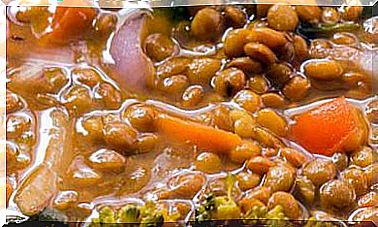Lactose Intolerance, What Is It And How To Recognize It
Do you have lactose intolerance? Know its symptoms, how to recognize it and what to do if you discover that you are intolerant to this sugar.

The Lactose is a natural sugar found in milk of mammals, which brings its sweet taste, but not everyone correctly digested. Specifically, lactose is the sugar in milk and constitutes its most important carbohydrate, formed by the union of two simple molecules, glucose and galactose.
Lactose intolerance is not a disease itself. It is a disorder caused by the decrease in the activity of a digestive enzyme called lactase, produced in the small intestine and responsible for breaking down lactose.
What is lactose intolerance?
In order to digest lactose and subsequently absorb it, the action of lactase is required, which is responsible for breaking down the lactose molecule. When the lactose molecule reaches the large intestine intact, its fermentation takes place and the classic digestive symptoms that define intolerance can appear.
This enzymatic mechanism, vital in newborns, loses its effectiveness over the years in a dynamic that has a certain logic given that, unlike the rest of mammals, the human species is the only one that consumes milk after lactation.
Lactase deficiency, the enzyme necessary for the digestion of lactose, is highly prevalent in Asian and sub-Saharan populations and is much more common in southern Europe than in the Nordic countries. In Spain an affectation of between 15 and 20% of the entire adult population is estimated .
Types of intolerance
There is not a single type of lactose intolerance, but several depending on the tolerance to the ingested dose and the symptoms presented. This intolerance can occur at any age: at birth, during childhood when introducing cow’s milk or as an adult.
The primary intolerance gene is progressive and permanent. The secondary, caused by intestinal damage, is reversible if dairy intake is temporarily avoided and the mucosa is regenerated. In the congenital, which is extremely rare, lactose cannot be ingested.
Sensitivity to lactose varies widely. In primary intolerance, in which lactase activity decreases over the years, there are different categories. There are people who digest up to 12 g of lactose (almost a glass of milk) in one go and others who tolerate lower amounts.
Symptoms of lactose intolerance
The lactose intolerance is often underestimated because its symptoms can pass almost unnoticed. The most frequent are bloating, abdominal pain, flatulence, spasms, acidic and watery diarrhea … In certain more or less chronic situations it can cause growth retardation, weight disorders, malnutrition, vomiting, nausea.
When do its effects appear?
Depending on the case, immediately after ingestion, or after a longer period of time depending on the amount tolerated. It can range from 30 minutes to two hours. There are individuals with intolerance who are asymptomatic throughout life because they do not exceed their limits.
How Lactose Intolerance Is Diagnosed
The lack of specificity of lactose intolerance requires a correct diagnosis. The most widely used method is the expired hydrogen test. It is based on detecting the level of this gas in the breath, since if lactose is poorly digested, it is fermented by bacteria in the colon and produces a lot of hydrogen, which passes into the blood and lungs and is eliminated through the breath. .
Other less common tests are the blood test or the biopsy.
Foods with the most lactose
Whole milk, cream, milk ice creams and béchamel have the highest concentrations. Butter, mature cheese (Manchego, Gruyère and Emmental type) or mozzarella contain little quantity. At an intermediate level are goat’s milk, yogurt and fresh cheese.
Even if a person does not consume dairy products for ethical or health reasons, they may be consuming lactose without knowing it. This is because lactose is not only present in dairy products. It is an additive that is also found in processed foods, sweets, beverages, toothpastes, and medicines. About 20% of medicines contain lactose as an excipient.









